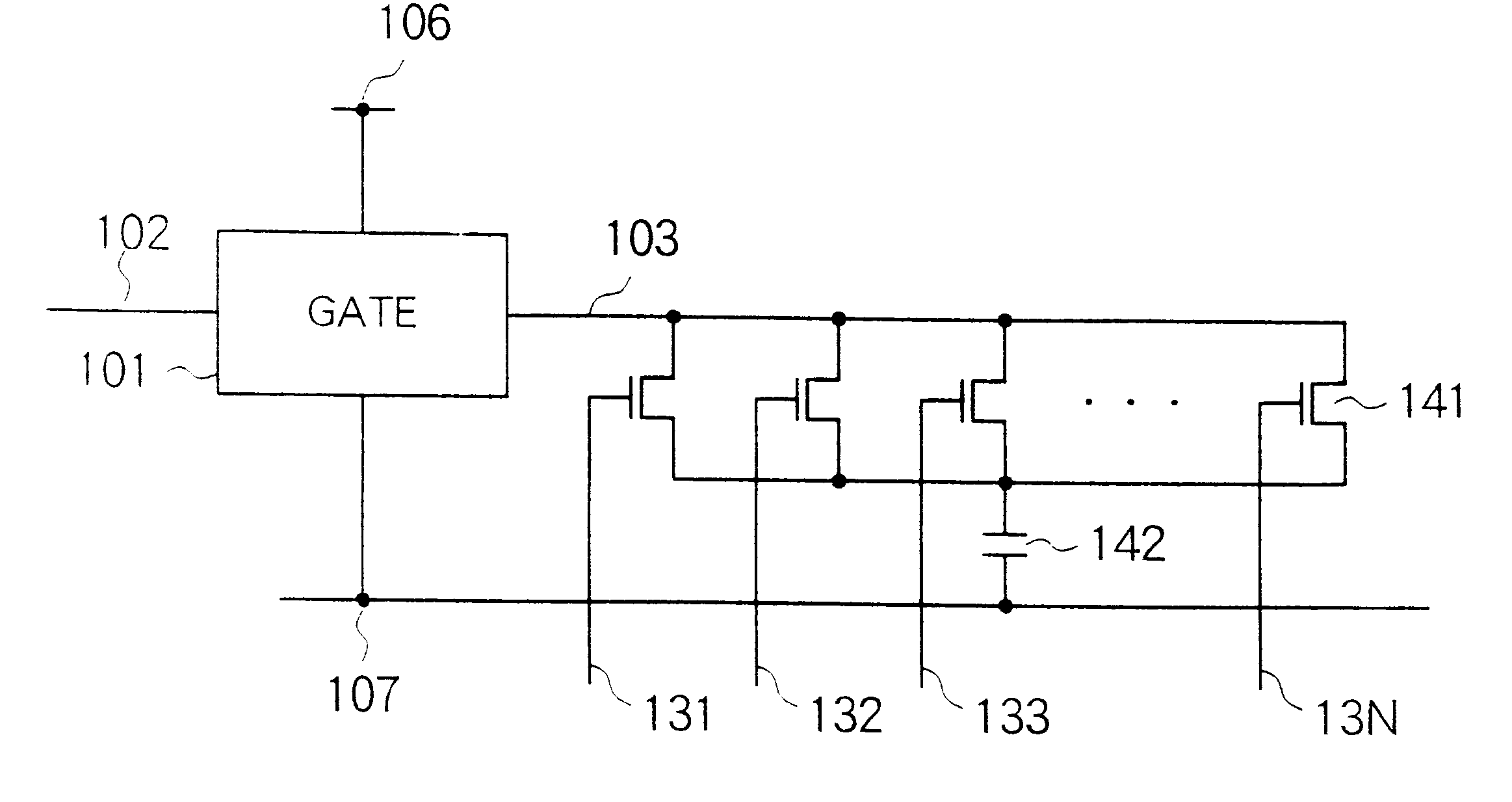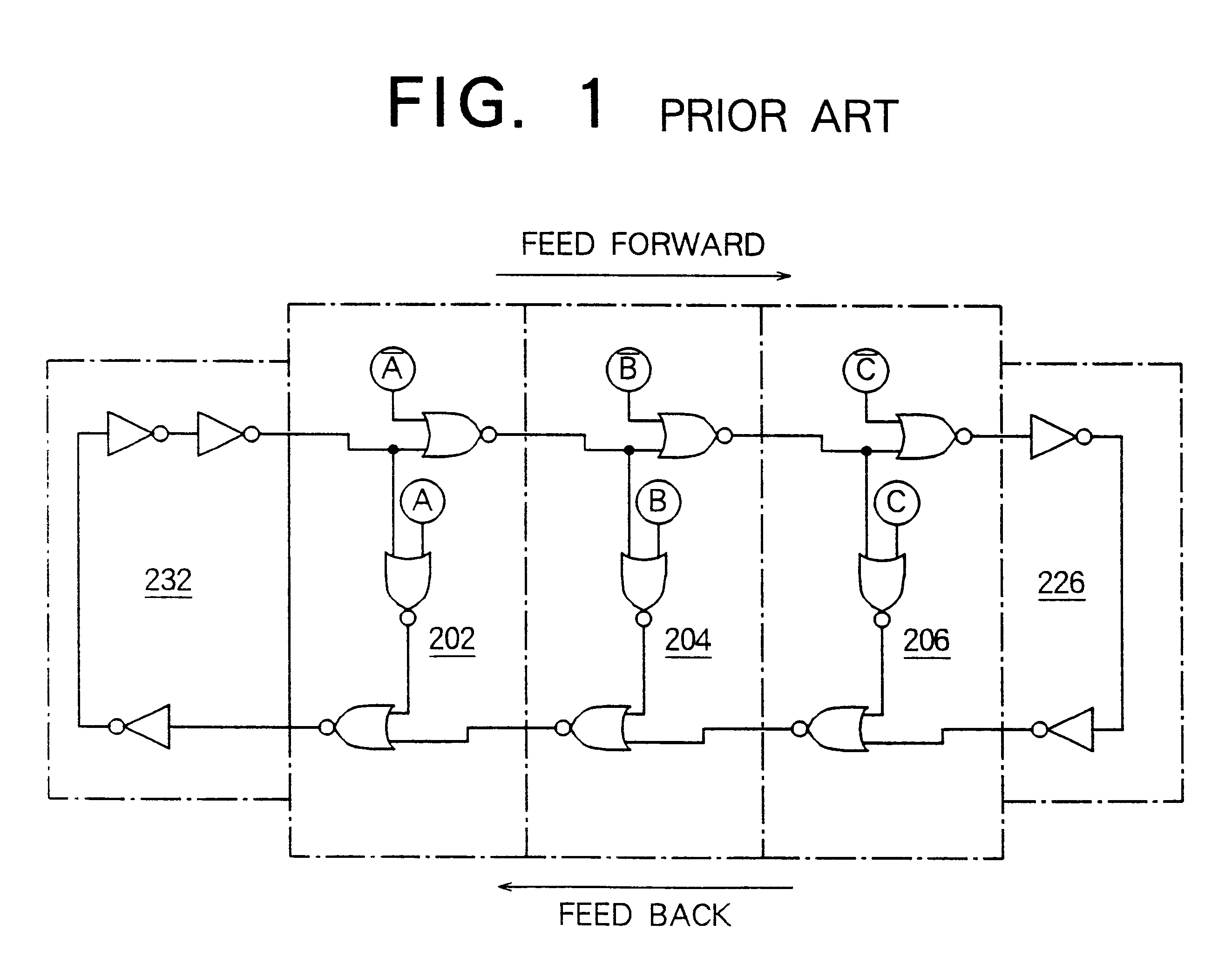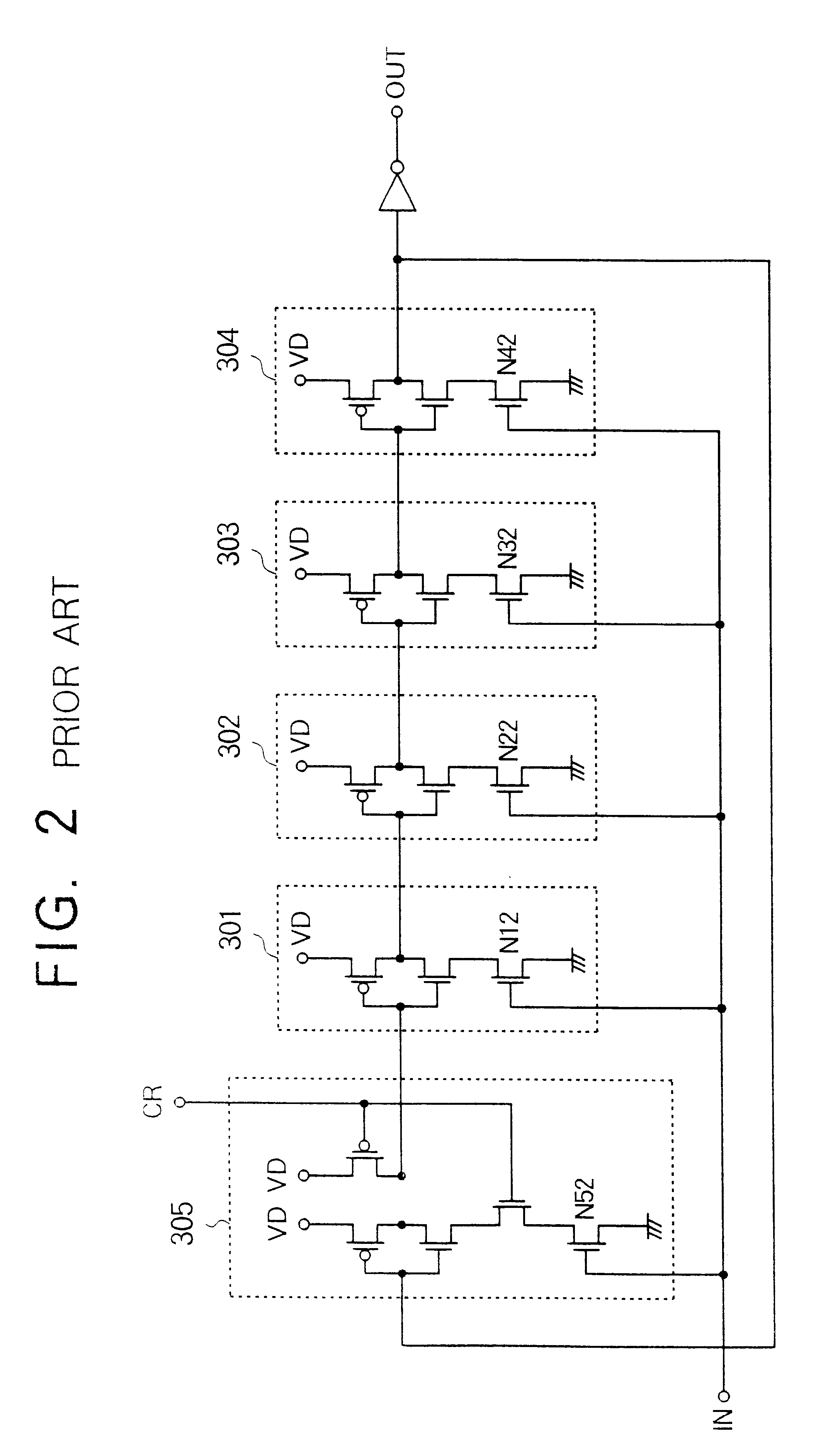Variable delay circuit
a delay circuit and variable delay technology, applied in pulse generators, pulse manipulation, pulse techniques, etc., can solve the problems of oscillator noise, oscillator changes, and different gain of voltage controlled oscillators of the same design
- Summary
- Abstract
- Description
- Claims
- Application Information
AI Technical Summary
Benefits of technology
Problems solved by technology
Method used
Image
Examples
first embodiment
Referring to FIG. 3, a variable delay circuit according to the present invention comprises a gate element 101 having an input 102 for receiving an input signal for the voltage controlled oscillator, an output 103 for supplying an output signal having a desired delay from the input signal, a first current terminal 104 and a second current terminal 105 for operation, a plurality of (N.gtoreq.2) parallel p-channel MOSFETs (pMOSFETs) 108 each having a source connected to a first source line 106, a drain connected to the first current terminal 104 of the gate element 101 and a gate connected to a corresponding one of control lines 111 to 11N and a plurality of (N.gtoreq.2) parallel n-channel MOSFETs (nMOSFETs) 109 each having a source connected to a second source line 107, a drain connected to the second current terminal 105 of the gate element 101 and a gate connected to a corresponding one of control lines 121 to 12N. N pMOSFETs 108 have respective channel widths (w) and respective cha...
second embodiment
Referring to FIG. 6, a variable delay circuit according to the present invention comprises a gate element 101, which is similar to that shown in FIG. 4, connected between source lines 106 and 107 and having an input 102 and an output 103, and a plurality (N) of parallel nMOSFETs 141 connected in series with a capacitor 142 between the output line 103 of the gate element 101 and the low potential source line 107.
Specifically, the combination of the plurality of MOSFETs 141 and the capacitor 142 constitutes an RC network, wherein the resistance R is controlled by a set of control signals supplied to the gate electrodes 131 to 13N of the nMOSFETs 141. The capacitance of the capacitor 142 is preferably set between 100 fF and 500 fF for a set of L / W's for the nMOSFETs 141 similar to those of the first embodiment.
In FIG. 6, assuming that the total ON-current of nMOSFETs 141 which are ON due to a specific set of control signals is expressed by "I", the delay is in proportion to 1 / I. By emp...
third embodiment
Referring to FIG. 7, a variable delay circuit according to the present invention comprises a plurality (M) of cascaded delay sections 161 each implemented by a variable delay circuit of FIG. 3. Each delay section 161 is controlled by a common set of control signals supplied through control lines 111 to 11N and 121 to 12N of the each delay section 161. The variable delay circuit of FIG. 7 achieves a wider control range for the delay time which is M times the control range of the variable delay circuit of FIG. 3.
PUM
 Login to View More
Login to View More Abstract
Description
Claims
Application Information
 Login to View More
Login to View More - R&D
- Intellectual Property
- Life Sciences
- Materials
- Tech Scout
- Unparalleled Data Quality
- Higher Quality Content
- 60% Fewer Hallucinations
Browse by: Latest US Patents, China's latest patents, Technical Efficacy Thesaurus, Application Domain, Technology Topic, Popular Technical Reports.
© 2025 PatSnap. All rights reserved.Legal|Privacy policy|Modern Slavery Act Transparency Statement|Sitemap|About US| Contact US: help@patsnap.com



